Yanko Design - Latest Posts |  |
| 20 Tips for Designers to Beat the Recession Posted: 03 Mar 2009 05:02 AM PST It is all around us, talk of Doom, gloom, job cuts, job losses and recession etc. This is not what a young designer, fresh out of school, wants to hear. It is also not what an employed designer wants to hear. However it is not the end of the road, and as long as the Earth keeps turning, there will be a tomorrow. Personally, I like to believe a recession is a time of great opportunity for everyone. Particularly for forward looking designers who have the right skills and are well placed to take advantage of a recovering economy. But first let me share a little about myself. I first got out of design school; it was at the height of the Asian Economic Crisis in 1997. There were hardly any industrial design jobs available. I was retrenched from my first furniture design job after 3 months, and it took me another 4 months before I found a design related job. It was not easy. However I remained focused throughout and kept learning every step of the way. If you are interested, I compiles some of my leanings in this post on my blog, but I think it is the right time to expand and update these tips as, today’s economic situation is not only about getting a job, it is also about keeping it.
1) Be Flexible 2) Can you sell Ice to an Eskimo? 3) Know Thyself 4) Where You want to go Today? 5) Continue to Improve 6) Lifelong Learning 7) Take Risks 8 ) Personal Branding 9) Passion 10) Build Relationship and Communication Skills 11) Be Serious with Your Job 12) Work Like a Slave 13) Always Shine with Good Work 14) HOMEWORK! 15) Network 16) Polish your Portfolio, Again and Again 17) Get Real Projects Fast 18) Deck out your CV with Results not Skills 19) Widen your Interests 20) Be a Problem Solver ———- Well, there we go! I hope these 20 tips will get you up and going as a designer, or perhaps even solidify your position as one. Please do not hesitate to leave a comment or additional questions you may have or need feedback for. Brian is a multidisciplinary strategic industrial designer that goes under the pseudonym of The Design Translator. He muses about strategic industrial design at his personal blog Design Sojourn. He laments the lack of good soya mochas and Italian Pizzas with Rocket and shredded Parma ham in Asia. No Tags |
| Boomerang That’s Got An Identity Crisis Posted: 03 Mar 2009 05:11 AM PST Mid-life crisis, financial crisis, relationship crisis…ah! there are too many crises in this world! Add to this list a Boomerang that thinks it's a camera: IDENTITY CRISIS! Don't mistake Glare for your run-of–the–mill summer time toy, it's a proper gadget with a functional, eject-able camera. You know the drill of a boomerang don't ya. Fly it out in the open and let it swish back to you. Glare too follows this drill but the difference lies in the gadgetry. It's equipped with a timer that triggers the cam into capture mode while flying mid-air. So essentially you can capture between really awkward shots of your buckteeth to motion blurs at night. Glutton for punishment? Hook the thing up to your comp via USB (charges the lithium battery this ways) and download all those funny/ embarrassing pics and share it with the world. Spec-wise, to make the Glare fly higher, you need to bend the wings upwards and to skim it lower, do the opposite. Also, the holes on the edges make it take a wider radius. If I lay my hands on one, I'll use it at night when the shimmy LED lights on the wings come on and give it a UFO look. Designer: Christopher A. Gregory
|
| Recycle Kitchen Waste For The Sake Of Your Plants Posted: 03 Mar 2009 02:15 AM PST It took me my son's science project on recycling to realize that we can really do something constructive out of the waste we generate from our kitchen. Before you turn up your noses and crank about the "Rotting Veggie Odors + Recycling", let me explain the pros of the Terraviva Domestic Composter. This is a device that sits neatly on your counter top, as stylish as any other appliance that you own. It simply makes a mish-mash of all the veggie waste into something palatable for the plants. Organic stuff like your peels and leftovers added to the composter decomposes with the help of aerobic microorganisms. These organisms just speed up the degradation process via electromechanical processes and make sure there is no stink. You will need to hook it up to a power source for around 20 minutes a day, and once its tanked up, it just keeps doing its thing. It has the capacity to process 12 liters or 7 kgs of waste at a time. Designer: Ravel Casela
|
| Posted: 03 Mar 2009 12:08 AM PST On your wrist. In a moment I’ll get to the main function of this bracelet - but first: when you get an email, you get a notification of it on the bottom of the display. That’s it. Just like a beeper. Also, the main function of this bracelet is to be a watch that appears to be a simple bangle, where in fact, when you run your finger through the hole, the time is displayed. Wowie! I wonder if you, the watchmaking community, takes this as a super big major insult to your craft? Is part of designing a wristwatch making it appealing to the eye? Is there a need for an alternative? “Technology is cyclical!” -Dennis Duffy Designers: Andy Kurovets
|
| Pro Skiers Will Really Like This Posted: 03 Mar 2009 12:05 AM PST Of all the winter sports skiing is one that I really like to watch but dread to try out. Call it the fear of falling or making a fool of myself, but I'd hate to be that pile on the snow that everyone is laughing at. Pros on the other hand need everything to make their tryst with the slopes as exhilarating as possible. Charlie Pyott has designed a mean pair of skis that is specifically meant for racers. The Twin Parabolic Ski, as it is called, is exciting enough to warrant production. Charlie has explained his idea with a lot of passion and flair:
Designer: Charlie Pyott
|
| With One Hand He Lifted, His House Designed Posted: 03 Mar 2009 12:00 AM PST Clouds from the sky he used, and colors from the atmosphere. He would with two hands attach them to eachother, and with maybe the help of a string or two, to the ceiling hold them. The kids would find them fort-like, and the mother of juice-stains find them easy to clean, as this is a detachable grid of replaceable fabric pieces; tiles, if you will. Kvadrat “Clouds” would he call them. And neat they would be. One is invariably reminded of any number of gallery installation artists when one sees these clouds in action. They’re made in 2 different Kvadrat fabrics, produced in 7 color combinations. Attached to one-another by special rubber bands. What I mention above about cleaning is this: as a person who is prone to spilling things that stain easily, I try to ask the hard-hitting questions about how I’m going to get this thing in the washing machine. Since this is a tile system, it’ll be easy: detach one, replace it, and put the stained tile in the washer. I find this decoration system to be quite attractive. Designers: Ronan and Erwan Bouroullec in collaboration with Kvadrat Textiles
|
| You are subscribed to email updates from Yanko Design To stop receiving these emails, you may unsubscribe now. | Email delivery powered by Google |
| Inbox too full? | |
| If you prefer to unsubscribe via postal mail, write to: Yanko Design, c/o Google, 20 W Kinzie, Chicago IL USA 60610 | |
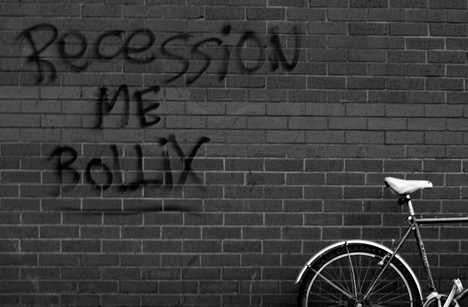







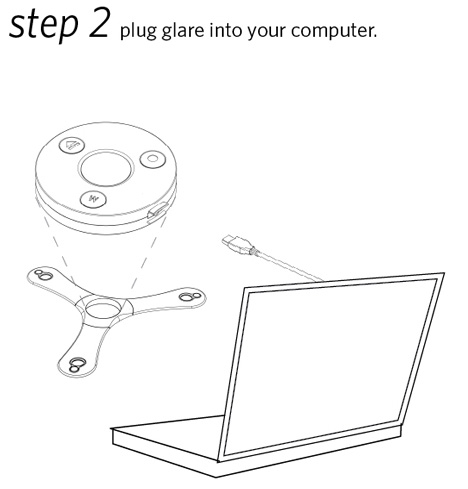
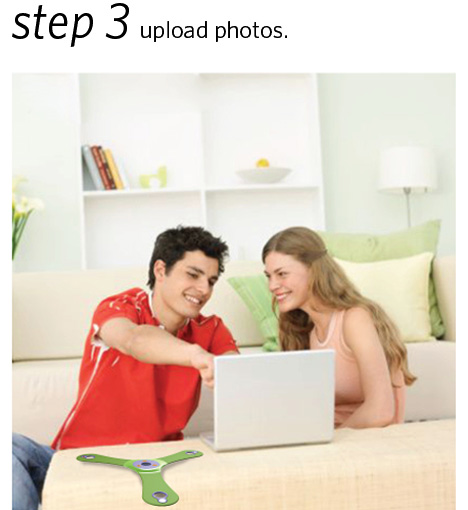






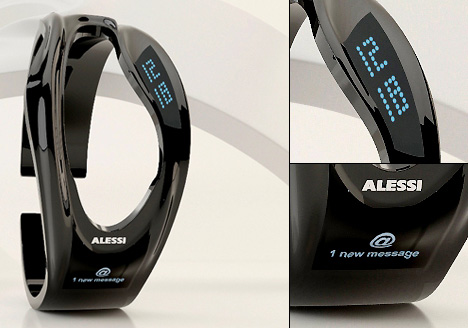




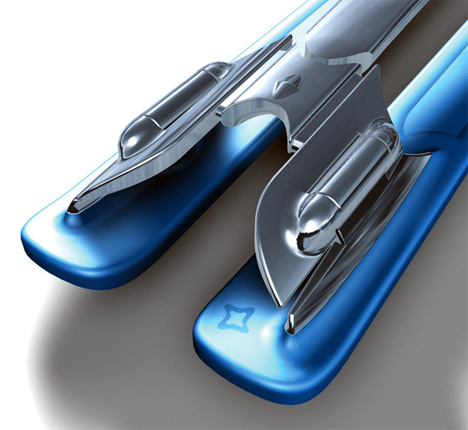



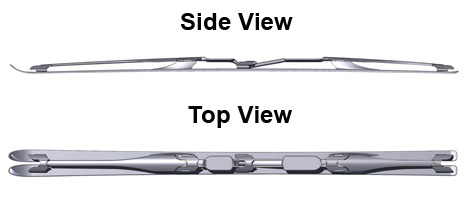


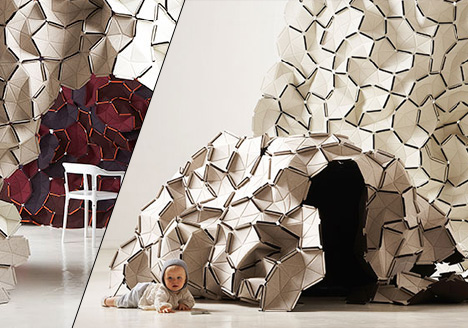
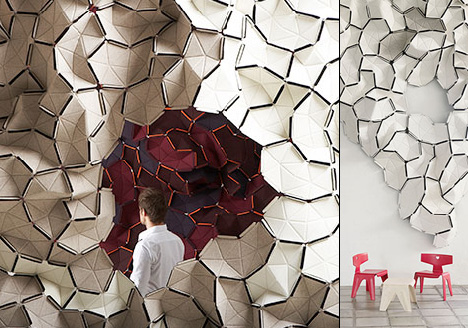
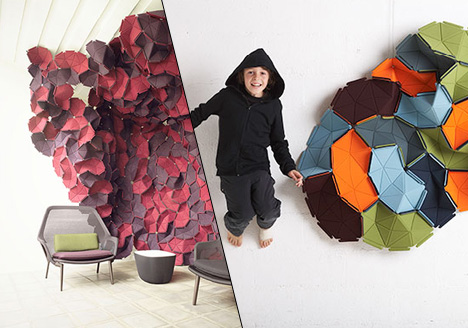
No comments:
Post a Comment